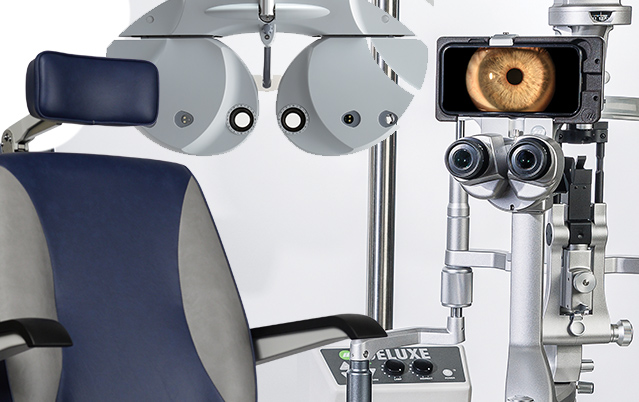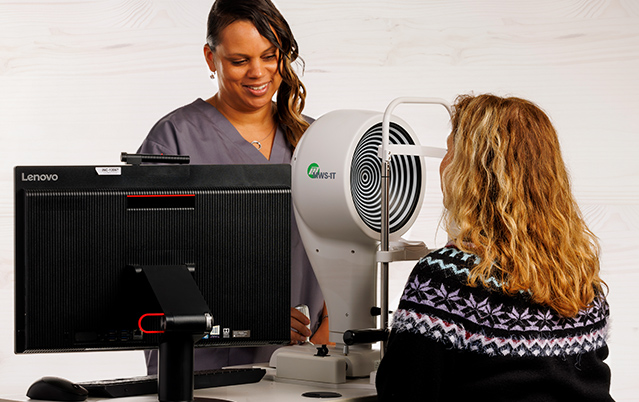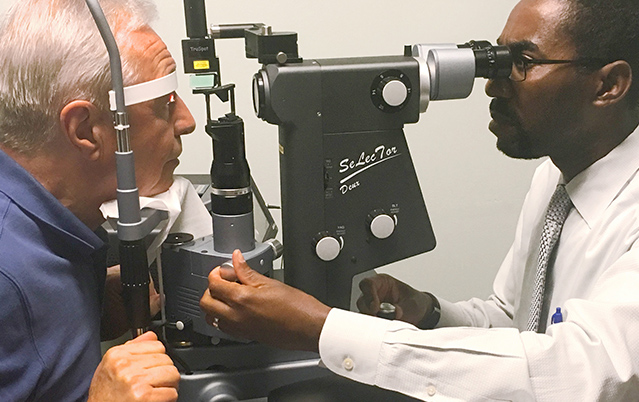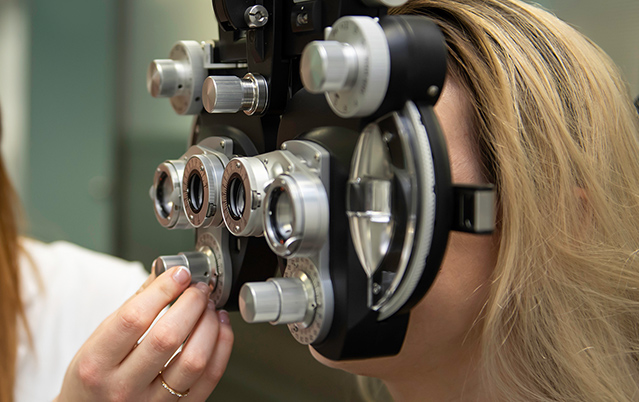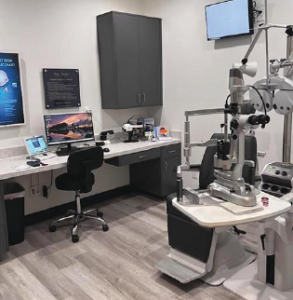Original Article Published in Vision Source OD magazine. Learn more about Vision Source here.
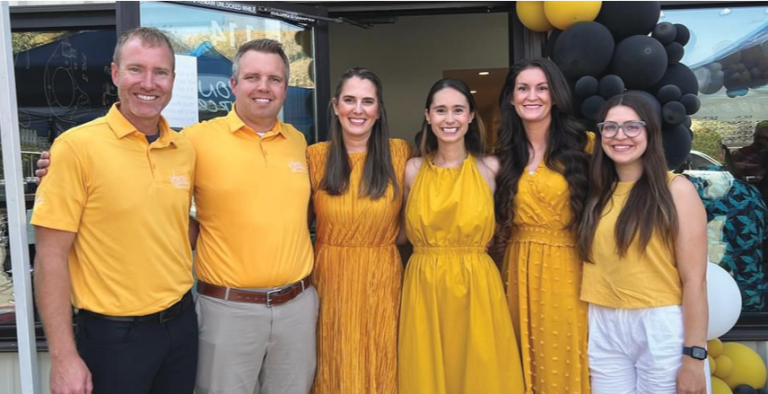
When Nicholas Donaghey, OD, steps into an exam lane, he already has a front-to-back view of the patient’s visual profile. Thanks to the Marco TRS and OPD systems and retinal imaging, he has an autorefraction and keratometry readings in the electronic health record (EHR), as well as topography and retinal images pulled up on screen. He can then assess key data at a glance, streamlining the entire exam process. Across three Vision Source® offices in Wenatchee, Leavenworth and Chelan, Washington, this technology has become a critical part of how the team operates.
Most recently, the practice expanded into Chelan in July of 2024. Dr. Donaghey, one of three partners in this six-optometrist practice, knew that he and his team wanted Marco technology from pretest through the exam lanes. “That’s what we had been using in the other offices, and we have confidence in the Marco technology. We were already familiar with it,” he says. Beyond the efficiency of the systems themselves, the reliability of Marco’s service team played a key role in the decision. “Our service representative is nearby. We’ve been able to rely on him for everything we need—almost at the drop of a hat.”
That’s been helpful to get the practice out of a jam if a connectivity issue or something else comes up. However, it’s not often necessary. “Hardware-wise, the cost of maintenance is very low. We recently replaced a still-reliable but aging TRS-5100 system, after more than 12 years of service, with a TRS-6100, ” he says. Two other TRS-5100 systems are still fully operational. “These units have been amazingly self-sufficient, with very infrequent service needs. We’ve needed only one hardware repair during the years of owning and using the technology across the three offices.”
Topography Change Analysis
Each of the locations has an OPD, and the integration with the EHR is seamless, says Dr. Donaghey. “Patients come in, we get the OPD and the readings go straight into the chart without needing to transpose anything.”
He says that he appreciates how the OPD’s software allows him to track corneal changes over time, a crucial tool for conditions like keratoconus or for evaluating the need for interventions such as corneal crosslinking. “I also fit a lot of scleral lenses on patients, and having that information already integrated makes it easier. We’re doing OPD on every patient, so we have that data on every comprehensive exam.”
For contact lens patients, efficiency is just as critical. He says the flexibility of the system allows them to adjust the order of the exam to keep from creating bottlenecks. For example, if the patient came in wearing contact lenses, “the techs can start in the room and do a quick history, and I evaluate the lenses before they take them out. Then we get the OPD scan once the lenses are off. The quickness is key—we want a fast look at topography, and it transfers in seconds. Within a minute or two, I have all the information I need.”
Preset Refraction Process
Standardization across the three locations
has been another benefit of Marco’s technology. With six doctors working across the offices, uniform systems ensure smooth operations. “Two of our associates weren’t using the TRS before, but they trained on it when they joined us in the past two years. It’s intuitive and fast.”
The TRS 6100 has streamlined refractions.
The doctors conduct the automated
refraction process, but “techs set up the
preset programs. We’ve each set the process so it corresponds to how we like to do our exams, and we can adjust as needed.” But it’s fast and efficient, Dr. Donaghey says.
In addition, what many doctors call “the
money button” is aptly named. The ability to toggle between a patient’s current prescription and what the exam finds encourages many patients to buy new eyewear based on their subjective perception that they need it.
With a new office location where the 20-foot-plus soaring industrial ceilings add a flair to the optical, Dr. Donaghey is pleased to see patients spend some time perusing the frames.
Dr. Donaghey says he has found that the money button is also effective when used to demonstrate change in one eye. “If there’s no change in one eye but a noticeable shift in the other, I can isolate that and show them exactly what’s happening.” He might say, “Before we go on, let me show you what’s happening with just this eye.
Ultimately, Dr. Donaghey values the combination of ease of implementation, integration and reliability that Marco’s systems offer. These are busy practices, so the doctors and staff want a process that is quick, seamless, dependable and efficient.

